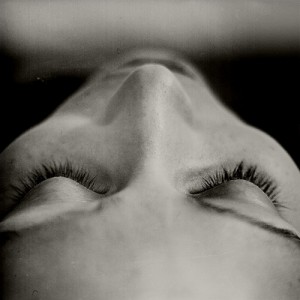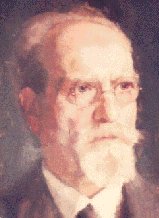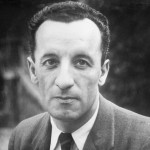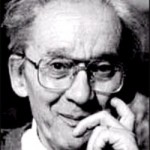The Phenomenology of Dreaming: A Dialogue
Oct 12th, 2012 | By Marc Applebaum | Category: Merleau-Ponty This conversation between philosopher Susi Ferrarello and me began, as is often the case in phenomenology, with an everyday experience: dreaming. My description of a dream led us to reflect on Merleau-Ponty’s discussions of dreaming and waking perception, and Husserl’s active and passive intentionality. The exchange continued over several weeks, and we’ve summarized it here–
This conversation between philosopher Susi Ferrarello and me began, as is often the case in phenomenology, with an everyday experience: dreaming. My description of a dream led us to reflect on Merleau-Ponty’s discussions of dreaming and waking perception, and Husserl’s active and passive intentionality. The exchange continued over several weeks, and we’ve summarized it here–
Marc: Last night, I was dreaming…and in the middle of the dream, I remember recognizing, “this is a dream.” But at the same time, what was occurring in the dream felt compelling to me, even with the thought that I was in a dream…though now, I can hardly remember what the dream was about. Last night’s dream suddenly came back to me while you and I were talking about Husserl, and what stands out is that both experiences were present, together: the compelling dream and the recognition, “I’m dreaming.” What do you think about this, as a philosopher?
 Susi: I have two questions: would you say you were somehow both asleep and awake? In order to analyze a lived-experience phenomenologically, I need to name it first—to understanding whether it is just one Erlebnisse or is it several, interwoven? Then we could ask, “what it the essence of this experience?”
Susi: I have two questions: would you say you were somehow both asleep and awake? In order to analyze a lived-experience phenomenologically, I need to name it first—to understanding whether it is just one Erlebnisse or is it several, interwoven? Then we could ask, “what it the essence of this experience?”
Marc: Well I’m sure I was not awake in the everyday sense of the word—I experienced everything I just mentioned as occurring “within a dream.” You know when we do descriptive phenomenological psychological research, we ask a question like, “Please describe in detail a time when you experienced jealousy,” or “an experience in which you learned something.” In this case, the question I’m responding to, so to speak, would be: “Please describe an experience in which you were aware, within a dream, that you were dreaming?”
The way this experience presented itself to me was not that I was dreaming and then suddenly thought, “I’m not dreaming, I’m awake!” Because that would have been an experience of “waking up”! Instead, in the middle of a dream, I recognized the dreaming, but at the same time, the dream continued. And this is what is so interesting to me now.
 I found an excellent article by Morley (1999) about Merleau-Ponty’s writings about dreams. Morley discussed Merleau-Ponty’s critique of mainstream psychology, in which “the dualistic habit of thinking is extended to a separation of the imaginary and the real, or between the sleeping, imagining mind and the waking, rational mind. As a corollary a hierarchical relation is implicit in that separation, where the imaginary is construed as secondary to or derivative of the real” (pp. 90-91). Merleau-Ponty, Morely points out, challenged this dualistic view of dreams.
I found an excellent article by Morley (1999) about Merleau-Ponty’s writings about dreams. Morley discussed Merleau-Ponty’s critique of mainstream psychology, in which “the dualistic habit of thinking is extended to a separation of the imaginary and the real, or between the sleeping, imagining mind and the waking, rational mind. As a corollary a hierarchical relation is implicit in that separation, where the imaginary is construed as secondary to or derivative of the real” (pp. 90-91). Merleau-Ponty, Morely points out, challenged this dualistic view of dreams.
So to answer your question, I’d say that phenomenally two meanings (dreaming and being aware—though not awake) were convincingly present to me. The feeling of interest lingered after I woke, and was reawakened when you and I were talking about Husserl. I’d almost forgotten the previous night’s dream, until it became relevant in our conversation.
Susi: So, if I follow you, while you were dreaming there was a mental and aware presentation of “another Marc” – the one you would probably call yourself – who was in the midst of his dream and found this dream compelling? What name could we give to this phenomenon? Who was the dreamer?
If you were actively aware of what was happening around you, which kind of intentionality was present? Using Husserl’s distinction between active and passive intentionality, I would say that both “active” and “passive synthesis” were present, but they were not “talking to each other”. Neither took center stage, so to speak.
Marc: I think I follow you—both were somehow present…
Susi: Yes, in Husserl’s terms we would say that your uninhibited, “passive” intentions and your “active” intentions were co-present, but neither subsumed the other. The dream-experience was unfolding through passive intentionality, and as it did, from another perspective—that of active intentionality—you began to see what was “really” occurring, namely that you were dreaming. But this realization did not modify the dreaming itself.
From a Husserlian perspective, typically during waking life we are always intending a multiplicity of objects—a free, ongoing stream of passive and active intending. This is always occurring; then, when I focus my attention upon something—for instance I look to see what is the object on my desk—from a Husserlian perspective I am willing to choose one out of many passively intended perceptions upon which to focus. When I turn to focus on a particular object that’s been passively intended, like the photograph sitting on my desk, the photograph is actively intended, and so it fully enters my lived-experience.
In the dream-experience you are describing, it sounds as if your consciousness was performing both kinds of intentions, but almost as if they do not belong to the same person, because once you notice the passively present dreaming, it becomes actively intended, but it seems as if its passive presence continues as well!
For this reason I first asked you if you could say that you lived both experiences (that of dreaming and being awake), because if so it is almost as if you were two different people at once. Because I imagine that either you were living two different modes of intentionality almost simultaneously, or you were noticing your passive intentions without changing them, so to speak, into active intentions. What do you think?
Marc: I feel like we’re on the way to something…I didn’t experience two “Marcs,” one who was awake and one who was asleep—so the multiple person metaphor breaks down when I compare it to the experience itself, as I remember it.
Of course the fact that this is a remembered experience adds another twist! As Merleau-Ponty (1996) pointed out, “Though it is indeed from the dreamer that I was last night that I require an account of the dream, the dreamer himself offers no account, and the person who does so is awake. Bereft of the waking state, dreams would be no more than instantaneous modulations, and so would not even exist for us” (Phenomenology of Perception, p. 293). So as he says, a dream’s only present as a dream for the one who recalls it, awake. So does that mean there was a kind of wakefulness in the dream, or alongside it? Naturally neuroscience might have something to say about this, but at this stage I’m not interested in the neurological account as much as the experiential one.
As I recall it, the dream was not an experience of being awake, if I mean “fully awake,” in other words, “in the waking world.” Instead it was an experience of noticing something “as if” awake, but while still dreaming. It’s precisely that the meaning “I’m awake” was not present, and that the noticing didn’t dissipate the convincing sense of the dream’s vividness that made the experience so interesting to me!
But it also strikes me as important that my “interest” in all of this only stood out to me in dialogue with you about phenomenology, later in the day, when I called you, some time after waking. So the horizon upon which the dream-phenomenon was reawakened was our conversation itself—while talking, the dream was suddenly relevant, it was almost as if I had forgotten the dream until the moment it became relevant in our conversation!
Susi: Dreaming is such an inscrutable experience! You’d reminded me that in the Phenomenology of Perception Merleau-Ponty wrote something about dreams which, when I read Morely’s article, seemed important to me. He described the dream-situation as something that is presented to us “anonymously”. He also talked about dream perceptions as demonstrating a quality of “depersonalization” because they’re given to us in a sense “impersonally,” and I think that for Husserl this is because of the structure of time-consciousness. Of course, this is a complex topic, because it implicates not only time but Husserl’s egology…
Marc: Yes—when I turn back to that place in his book, in fact Merleau-Ponty (1996) was describing perception in general, not just dreams: “If I wanted to render precisely the perceptual experience, I ought to say that one perceives in me, and not that I perceive. Every sensation carries within it the germ of a dream or depersonalization… “ (p. 215). So yes, I agree that we’re on the edges of the phenomenological exploration of personal identity as well…
About dreams and waking perceptions, as Morley (1999) points out, in The Visible and the Invisible Merleau-Ponty (1968) wrote, “the difference between perception and dream not being absolute, one is justified in counting them both among ‘our experiences’” (p. 6). Morley writes, “The waking world is the horizon upon which the dream world is constituted” (p. 94). So the waking world is present in the dream, but in a horizonal way—for Merleau-Ponty the “two worlds” of dreaming and waking are not strictly separable.
Susi: And these words of Merleau-Ponty’s remind me of why I mentioned Husserl’s notion of passive and active intentionality. Let me say more about this in order to explain how I’m viewing your dream experience.
 In Husserl’s Analysis Concerning Active and Passive Synthesis he conducts a sort of archeology of perception using his genetic phenomenological method, and makes the distinction between passive and active intentions. Generally speaking, as you know, every intentional act consists of a noesis and a noema. Noesis is the “subjective” side of an act, consciousness’s process of intending, and noema is the “objective” one, in other words that which is intended by consciousness. Another way to say this is that noesis is the field of constituting multiplicities, and noema is the field of constituted unities.
In Husserl’s Analysis Concerning Active and Passive Synthesis he conducts a sort of archeology of perception using his genetic phenomenological method, and makes the distinction between passive and active intentions. Generally speaking, as you know, every intentional act consists of a noesis and a noema. Noesis is the “subjective” side of an act, consciousness’s process of intending, and noema is the “objective” one, in other words that which is intended by consciousness. Another way to say this is that noesis is the field of constituting multiplicities, and noema is the field of constituted unities.
If we were to observe a tree, to use an example given by Husserl himself, we would say that from a phenomenological point of view the noesis is not the color of the tree viewed empirically, which from the perspective of physics changes moment-to-moment according to the intensity of the light, but rather my act of perceiving of the color of the tree. The noema of the colour of the tree is the colour as it was perceived by the subject—the color as it appears to me, now. This latter is an identical and unchangeable unit encompassing all the data pertaining to the perception of the colour as it was grasped by the noesis. So even if I see the light playing on the tree’s leaves, and the colors of the tree shifting, still the tree is given to me in perception as one unified object for me, resulting from many other passive and active perceptions. In this example the passive intention is mainly a perception. The noesis of this perception is an act of uninhibited intending, and the noema is the free fulfillment of several modes of being—in this case, the shifting colors of the light playing on the tree’s leaves.
Marc: So I think the implication is that in the ordinary flow of perceptual life, I’m constantly receiving, in a passive way, all kinds of perceptions of my surrounding world—and naturally I do not turn my attention to everything I could possibly be aware of, this would be impossible. Active intentionality occurs when I “pay attention” a particular feature of what’s present to me, say the leaves on a tree branch waving in the wind—this is what it means to “actively intend” a feature of the object which had been only passively intended before?
Susi: Yes—for example I might feel compelled to touch the tree’s trunk; I might just appreciate its shape. All these stimuli are simultaneously present to my consciousness and they can lead my awareness of the tree in any number of different directions. My consciousness, in the mode of attention, can follow only a few of these potential directions and in so doing, a passive intention becomes an active one—what we call “paying attention,” what Husserl calls a “position-taking” in relation to the perceived object.
In this way my passive intention becomes an active one in which the doxic or signitive act holds a primary position—by the way, this is what strikingly didn’t happen in an exclusive way, in your experience! Signitive acts are those acts of consciousness that represent what has been given—for example, finding the tree beautiful, or recognizing it as a maple, or in your case, recognizing what you were living as a dream. In your case it seems that the passive intending—being lived by the dream, so to speak—continued even as you partly engaged in a signitive act—recognizing that you were dreaming.
Marc: I think I see now why you were playfully talking about there being “two Marcs” present, and asked what kind of lived-experience this was, because what I’ve said could be read as a simultaneous passive and active intending…
Susi: And the first step in an active intention consists exactly in the process of validation as confirmation (Bewahrneitung) or verification (Bewährung) of what Husserl calls “the perceptual concordance” (Husserl, 2001, 143). In other words, I can say “yes” or “no” to what I’m intending. This occurs all the time in ordinary perceptual experience, of course. If while walking in a garden I see a flower, I might feel moved to reach out and touch it, or smell it—these are passive intentions that arise as possibilities. In a certain sense I must choose which intentions to confirm and act upon, because naturally we don’t act upon every possibility that’s given to us. The perceptual concordance is exactly that balance between what is given to consciousness as self-giving and the presentation of what is expected to be presented to the consciousness. In that sense the confirmation which lies behind the very first step of an active intention seems to be essentially a normative act of regulation by which the first balance can be restored.
 Marc: I think I follow what you’re saying—since for Husserl worldly objects are presented in an adumbrated way, in partial profiles, when we actively intend an object we are “confirming” that these adumbrations “add up,” so to speak, to a unified object that’s present to us. And this “adding up” is what is meant by “concordance,” I think. I went back to Aron Gurwitsch (1966) who says this nicely when he writes, “As we move around the thing, looking at it from different points of observation, the aspects change, the perceptual presentations of the same thing undergo variations. However, among the varying aspects there is not only a compatibility but even more a harmony and accordance,” and he says, according to Husserl, “the identity and the very existence of the perceived thing depend on that relation” (p. 149). So the concordance is a perceptual confirmation that the object is present to us.
Marc: I think I follow what you’re saying—since for Husserl worldly objects are presented in an adumbrated way, in partial profiles, when we actively intend an object we are “confirming” that these adumbrations “add up,” so to speak, to a unified object that’s present to us. And this “adding up” is what is meant by “concordance,” I think. I went back to Aron Gurwitsch (1966) who says this nicely when he writes, “As we move around the thing, looking at it from different points of observation, the aspects change, the perceptual presentations of the same thing undergo variations. However, among the varying aspects there is not only a compatibility but even more a harmony and accordance,” and he says, according to Husserl, “the identity and the very existence of the perceived thing depend on that relation” (p. 149). So the concordance is a perceptual confirmation that the object is present to us.
Susi: Right, and these signifying and validating acts confirm consciousness’s passage from a passive to active intention. According to Husserl, passive intentionality turns into an active one by a judgment of acceptance and its first noema ends up being what is accepted as valid or invalid. If someone is staring at a tree absentmindedly, after a while her passive intention is translated into the “decision” to do something—this is the shift to active intentionality. She “decides” to examine its shape, enjoy its beauty, climb into its branches, et cetera. Different active directions flow from this shift to actively intending.
Marc: So in a way, the shift to actively intending implicates the person’s relationship to the intended object? The tree is grasped “as something” in relation to the person: for example, as a beautiful object, as something to climb on, as providing shade where I can eat lunch with a friend?
Susi: Yes—when someone is absentmindedly staring at a tree, she is open to a free horizon of expectations, an open horizon of multiple passive intentions. Then, in shifting to an actively intending relationship with the tree, the ego adopts a position of judging (or loving or talking, or imagining etc.) and as Husserl wrote, “appropriates what is now concordantly given as being simpliciter. Active acceptance is what carries out a peculiar appropriation, determination, thereby establishing this being as valid for me from now on”(2001, p. 95).
When I said that in your dream experience the two kinds of intentions were not “talking to each other”, I meant that this shift from free, passive intentions to the acceptance or validation of one of them did not seem to take place decisively, because in your dream you seemed to be viewing a range of passive free intentions (the dream contents) but they did not stimulate or impinge on your active intending. You were the same subject of two different worlds that usually communicate. For this reason I like Morley’s quotations of Merleau-Ponty’s words about dreams in The Visible and the Invisible, when he talks about depersonalization or the world of myth. It seems to me that we have three subjects so far: the one of your dream, the one of your being awake and the one of your talking about it, now. What do you think?
Marc: Well experientially, I can’t go with “three subjects” in a literal way, because what stood out so strongly in the experience was precisely that there was only one, the “me”! But then, I suppose you’re asking, “Who is reporting this?” When I shift out of a natural attitude in relation to my dream, this question comes alive for me too.
It may well be that in the experience there was a shifting of what my colleague Yannis Toussulis would call “the locus of identity” from one who was passively intending to one who was actively intending—and then of course later to the “me” who recollects the dream while talking to you, and gets interested all over again!
And it’s probably right for us to say, with Merleau-Ponty, that the dreamer is in a way “anonymous,” and in a certain sense only “recognizes himself” as “Marc” retrospectively, in the shift to wakefulness. So maybe there was a shifting from passive intending to partly-actively intending, and then later of course, to a very active intending of the experience and a retrospective narrating in dialogue with you. One of the reasons why I like Morley’s article so much is that he demonstrates clearly how phenomenology opens us up to a kind of ontological multiplicity, living in multiple worlds or living the same world in manifold ways…Morley cites the following from Merleau-Ponty’s Collège de France lecture notes:
“The distinction between the real and the oneiric [dreamlike] cannot be identical with the simple distinction between consciousness filled with meaning and consciousness given up to its own void. The two modalities impinge on one another. Our waking relations with objects and others especially have an oneiric character as a matter of principle: others are present to us in the way that dreams are” (1968/1970, p. 48).
So this perspective really invites us to openly explore how the multiple worlds we live in interpenetrate each other…not only how wakefulness could enter dreams, but how waking life can be dreamlike.
Susi: And we haven’t really touched upon the issue of time. Maybe in your experience, communication between the two worlds was impossible because they were stuck in a different kinds of “present”! While you were dreaming, a part of yourself was living through the dream in a flow of time that was not the ordinary, waking one. Passive intending was stuck in that living instant. Probably the moment of the ‘acceptance’ and ‘validation’ of active intending was stuck in another phase of the flow of time that the dreamer was not living. Or maybe, the dreamer is not in the flow of time at all, in a certain way. Were you able to perceive the phases of your perception of yourself dreaming?
Marc: Yes, that’s a very good observation! Talking to you now, I can’t trust that I’m exactly capturing the dream’s temporality, precisely because I’m narrating, and the narration has its own kind of time-structures, as Ricoeur, in Time and Narrative (1984) for example, points out. “Remembering,” as we know phenomenologically isn’t a carbon copy of what was lived the way it was lived—it is not a kind of “time travel,” and it is not a sort of pressing “reverse” and backing up to an earlier place on the tape!
But what’s still given to me still, in the present, is the strong impression of my dreaming being overlapped by my recognition of the dreaming…and there was a sense of the dreaming continuing to unfold for a period of time with this simultaneity, so I was not awake and remembering a past dream, but somehow still living the dream. A kind of liminal experience…
All of this was different, qualitatively, from another kind of experience I’m sure you’ve had too: waking with the emotional impacts of a dream still present—for example, waking from a nightmare, still feeling emotionally shaken, even though one is decisively awake now! It was this “overlapping” which interests me so much. What do you think? Where have we arrived?
Susi: Dreaming is a human lived-experience that so many have explored…though I don’t think we arrived at a conclusive understanding of the structure of your dream, we delved into the different layers of our experience, and began to unfold and appreciate the complexity of dreaming and intentionality.
References
Gurwitsch, A. (1966). Studies in phenomenology and psychology. Evanston: Northwestern University Press.
Husserl, E. (2001). Analyses concerning active and passive synthesis: Lectures on transcendental logic (A. J. Steinbock, Trans.). Dordrecht, The Netherlands: Kluwer Academic Publishers.
Merleau-Ponty, M. (1968). The visible and the invisible (C. Lefort, Ed.; A. Lingus, Trans.). Evanston: Northwestern University Press.
Merleau-Ponty, M. (1996). Phenomenology of perception (C. Smith, Trans.). New York: Routledge.
Morley, J. (1999). The sleeping subject: Merleau-Ponty on dreaming. Theory & Psychology 9(1) 89-101.
Ricoeur, P. (1984). Time and narrative: Volume I (K. McGlaughlin and D. Pellauer, Trans.). Chicago: University of Chicago Press.
Credits
Sleeping face photo credit: Victor Bezrukov via photopin cc
Tree branches photo credit: Denis Collette…!!! via photopin cc
Wildflowers photo credit: Denis Collette…!!! via photopin cc



 Follow
Follow email
email